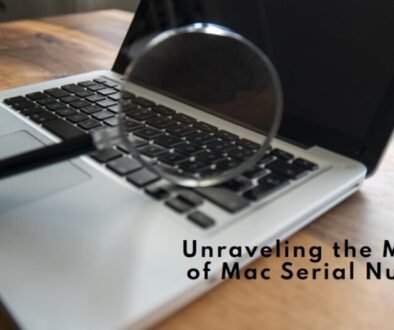Why book memo is essential for any student?
If you are a student and are looking for a way to optimize your study time and get your brain to retain more information, the book memo may be the tool you are looking for.
Although its use has generally been associated with the business world, the memorandum is already a key document in other areas, such as literature or academics.
In this article we are going to talk precisely about the use of the memo as a study resource, highlighting how it helps in the structuring, retention and organization of information.
What is the book memo and why is it essential for any student?
Although we have already made a brief introduction to what a memo is and the convenience of printing it, we are going to review some of its main characteristics and insist on the advantages it represents for students.
As we have already pointed out, a memorandum (or memo) is an internal communication document that conveys a message. It does so as briefly as possible, thus focusing on important information and avoiding adding superfluous data that does not contribute.
The Definition and Purpose of the Book Memo
A memorandum is a document that, in a brief and concise manner, brings together the most relevant information. It generally has a letter format, since the memo contains information such as the sender and issuer of the message or the date it was sent.
In this way, it transmits a message in a direct, effective and summarized way. Although memos have originally been used as a means to improve internal company communication, their use has extended to other areas.
For example, writers use these documents to close contracts, literary briefings and conditions with their publishers. In the world of learning, students have seen the book memorandum as a great resource for making summaries but also for presenting research plans and proposals.
The evolution of the memorandum has not only been in its use, but also in its format. While traditionally it consisted of a very basic printed document on an aesthetic level, today the memo can be made more visual. This favors better retention of information, being able to add elements such as graphs or tables to organize and highlight the most essential parts of the message. In addition, the printing options are also greater, being able to use different colors or even a more resistant type of paper.
How the book memo can help students better organize and retain information?
The main characteristic of a book memo is its brevity and conciseness. Writing one involves summarizing the information as much as possible so that it can be transmitted directly and quickly, and that it is also retained by the person who receives it.
Knowing this, it is not surprising that the Children Book Ghostwriting Services is often presented as one of the many study techniques. When learning a topic, making the effort to synthesize the most important information in just one page helps you understand and remember it better. In addition, the result is a document that you can review later.
Its advantages are therefore many:
- The writing is clear, especially compared to how it is presented in textbooks or class notes.
- The structure is also simpler, so the data (especially numerical data) is organized and more visual (for example, a timeline, a statistical table, or a bar chart).
- They serve as a starting point to develop the rest of the syllabus. It is clear that in an exam you will need to include more information than what is in the memo, but this serves as the index and as the “foundations” on which to later build. Since thanks to it you have retained what is essential, it will be easier to incorporate the rest of the elements later.
Focus on being productive instead of being busy
–Tim Ferris
How the book memo can be used to improve decision making and problem solving?
So far we have evaluated the usefulness of the memorandum to synthesize and study agendas. However, within the academic world, its use can also be to transmit a message from one person to another.
Teachers and students turn to memos when they need to share relevant information quickly, effectively, and in writing. By getting to the heart of the matter, this document does not get lost in ramblings and raises the fundamental questions so that they receive an answer or are simply brought to the attention of the other person.
An example is a student presenting a research proposal to his thesis supervisor. It can also happen the other way around, when it is the teacher who presents several study topics to his students for them to choose from. Therefore, decision making is facilitated.
On a more bureaucratic level, the memorandum can be helpful in solving problems or making an official request. An example is requesting a change in an exam or filing a complaint for a grade.
Whatever the case, it is advisable to print the memo. Although there is the possibility of sending it by email, the message is likely to get lost in a spam folder or not even be opened. However, sending it on paper and with quality printing standards ensures that the memo will be received, read, and efficiently transmit the message.
How to use the book memo for more effective learning?
Active learning allows the student to “design” his or her own learning process through the development of knowledge and understanding of information. Therefore, elements such as motivation, active participation and mindfulness are key in this teaching strategy.
The objective is for the student to adopt a leading role in achieving their learning goals. This approach has been shown to increase student productivity and concentration.
For example, instead of just listening to their teacher and making notes, the student must reflect, question and understand what they are taught to interpret it. In this sense, the book memo can be a tool for efficient study.
How to use the book memo for active learning?
The memorandum, as we have already seen, is based on the synthesis of information. Being able to stay with what is important, structure the information logically and create a document to support the study are skills that are developed thanks to memos and that enhance active learning.
Using book memos, the student will be able to:
- Connect ideas and process them both individually and as a whole.
- Classify the incoming information schematically and incorporate details little by little.
- Share knowledge, since the writing of the memo can be joint (which would encourage collaborative learning).
- Develop metacognition, since the student is capable of making a formative evaluation of their learning.
- Focus teaching on research, on the discovery and resolution of problems and reflection on the issues that must be synthesized and understood.
- Build your own study material, even being able to put together several memos, organize them according to a logical page numbering and go to a professional desktop publishing printer to create a personalized book with them.
True education is about getting the best out of yourself
Mahatma Gandhi
Practical Tips for Effective Note Taking with the Book Memo
Through the teacher’s explanations, research in books or conversations between classmates (if collaborative learning is also supported), the ideal is for the student to be able to make notes on the most relevant information. Later, based on them, he can prepare his book memorandum.
However, to optimize the resource of the memo, it is important to follow some practical tips.
- The structure of the memorandum must be taken into account: this document has specific characteristics in terms of form. The most important thing should always be at the beginning and be visually accessible, so when taking notes, you must dedicate a specific space where you can place the most relevant thing that will later become the main message of the memo. Nor can we lose sight of the fact that it is a short document, so not too many notes should be made.
- Concentration is essential. It is not enough to copy word by word what you hear, but in the process of taking notes there must already be an understanding and synthesis of the information.
- It is recommended to write down key words and main ideas, as well as use markers to highlight those elements that later help in the organization of the information.
- The memo is a final document, so those annotations should be used as an initial draft. It is also recommended that the memo be printed, something possible thanks to desktop publishing platforms such as coolLibri.es.
How to use the book memo to improve formative assessment and autonomous learning?
As we have noted, one of the great advantages of active learning is that it encourages formative assessment and autonomous learning. It is the student who personalizes and becomes aware not only of what he is taught but also of how he learns.
With the book memo the student creates his or her own academic material. He also does it after a process of understanding and synthesis of the information. This allows you to be independent in learning and take responsibility for the message you convey. The advantages are therefore many:
- The information is processed autonomously and then synthesized in the book memo.
- The student must get involved and take responsibility for what they learn.
- It is not enough to just memorize, but there must be an interest in understanding and being able to transmit a logical, concise and clear message.
- Generates self-motivation and autonomy.
Print your book memo and improve your productivity and learning
Fortunately, the printing press is now a democratized resource and accessible to all people, especially students who want to optimize and better transmit their knowledge.
Thanks to platforms like coolLibri.es this is easier than ever. Not only does it offer competitive pricing, but it allows for full customization of the book memo. The possibility of adding colors, fonts or even layout increases the efficiency of these documents.
If you are considering printing your book or your own memo, count on the professionalism and experience of a company like Collabra.



